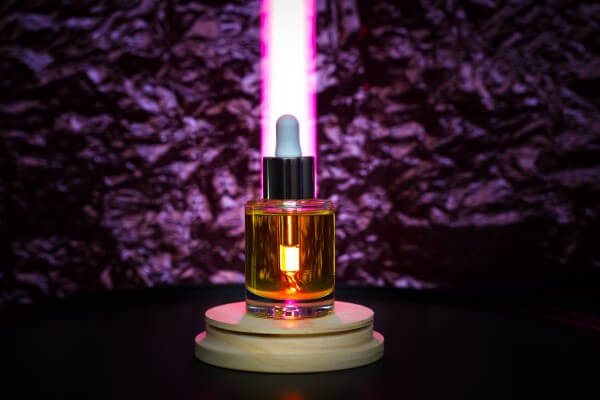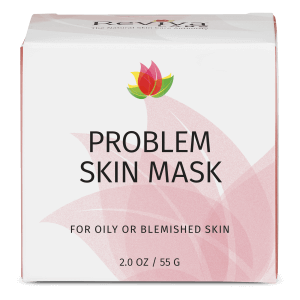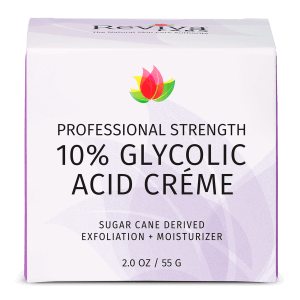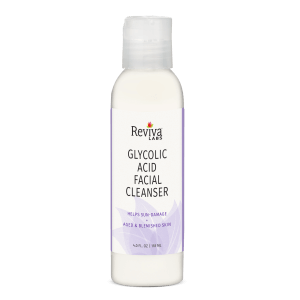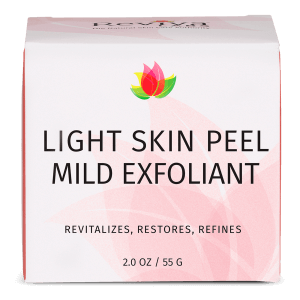Natural, Reviva Labs, Skin Care
Why Does My Skin Break Out After Trying a New Skincare Product?
Trying a new skincare product can be both exciting and nerve-wracking. You’re hopeful that this new addition to your routine will answer your skincare needs but sometimes it can result in unexpected breakouts. These breakouts, often referred to as “purging,” can be frustrating, leaving you questioning your choices and your skin’s reaction.
Skin types play a significant role in determining how your skin might react to new products. Those with oily or acne-prone skin are often far more susceptible to purging. With an overabundance of sebaceous glands, an oily skin is by nature more reactive and stimulated by the introduction of a new product. Plus, an oilier skin is more prone to clogged pores, which can also become irritated by a new item.
Dry and sensitive skin types are also at a higher risk for adverse reactions due to a compromised barrier function. The skin’s barrier, the uppermost layer of the stratum corneum, is comprised of tough skin cells that are tasked with keeping moisture in and irritants out. When the barrier is damaged, meaning flaky or rough, the skin is more prone to irritation, redness and inflammation.
Ingredients That Can Trigger Breakouts
Some ingredients are more likely to cause breakouts than others. For instance, products for drier skin often use heavy, occlusive ingredients like mineral oil, petrolatum, and lanolin can clog pores. These components can lead to comedonal acne like black and white heads. For acne-prone or oilier skin, be cautious of formulas that have higher levels of active ingredients like benzoyl peroxide or salicylic acid. While they’re great for treating acne, they can also cause initial irritation and dryness, which may exacerbate breakouts before improving the skin.
The same holds true for retinoids, such as tretinoin or adapalene. They are notorious for causing a purging phase when first introduced as they work to clear out deep-seated impurities. However, over time, they can significantly improve skin texture and reduce acne. It’s essential to introduce these products gradually and use them as directed to minimize the risk of severe breakouts.
Be mindful of exfoliating acids, such as glycolic acid and lactic acid, since they can also lead to breakouts. These AHAs increase cell turnover, which can initially bring more clogged pores to the surface. Although initially disheartening, these ingredients are excellent for creating a smoother, clearer skin. Patience and proper application are key to using these powerful ingredients.
Lastly, fragrance, essential oils and preservatives can create reactions in all skin types leaving the skin red, and itchy. It’s always wise to opt for fragrance-free products if your skin tends to react poorly to new items.
The Purging Process: What to Expect
When your skin starts to purge, it’s essentially speeding up clearing out the gunk from your pores. This can manifest as breakouts, whiteheads, or blackheads, and is usually concentrated in areas where you typically experience acne. The purging period usually lasts about four to six weeks, depending on your skin type and the product in question. It’s important to differentiate between purging and a breakout caused by irritation. Purging is a temporary phase, whereas irritation breakouts suggest that the product is not suitable for your skin.
Be mindful of stress and hormonal changes when changing your skincare since both can exacerbate the skin’s reaction to new products. Stress increases the production of cortisol, a hormone that can lead to increased oil production and subsequent breakouts. Hormonal fluctuations, particularly those related to menstrual cycles, can also cause the skin to be more reactive. Being mindful of these factors and managing stress through relaxation techniques can help mitigate their impact on your skin.

Mitigating Breakouts When Trying New Products
To minimize the risk of breakouts when trying a new skincare product, start by patch testing. Apply a small amount of the product on a discreet area of your skin, such as behind your ear or on your inner arm and wait 24 to 48 hours to see if any reaction occurs. If your skin shows no signs of irritation, gradually introduce the product into your routine. Start with a small amount and slowly increase the frequency of use over a few weeks. This gradual introduction allows your skin to acclimate to the new ingredients and reduces the likelihood of severe breakouts.
It’s also wise to introduce only one new product at a time. This way, if your skin reacts poorly, you can easily identify the culprit and adjust your routine accordingly. Keep your existing skincare routine simple and consistent during this period to avoid overwhelming your skin.
Common Misconceptions About Skincare Breakouts
A common misconception is that any breakout after trying a new product means the product is bad for your skin. While it’s true that some reactions indicate a product is unsuitable, purging is a normal part of the skin’s adjustment process to certain active ingredients. It’s important to give your skin time to adapt, typically about four to six weeks, before deciding if a product is genuinely problematic.
Another misconception is that natural or organic products are always gentle on the skin. In reality, natural ingredients can be potent and cause reactions just like synthetic ones. Essential oils are a prime example of an ingredient that’s natural but also highly irritating to skin. Always evaluate a product based on its ingredients and how your skin reacts, rather than its marketing claims.
Listening to your skin and adjusting your routine based on its needs is crucial. Skincare is not a one-size-fits-all approach, and what works for one person may not work for another. Paying attention to your skin’s responses and making informed choices can help you achieve and maintain clear, healthy skin.
When to Seek Professional Help
If you experience severe or persistent breakouts after introducing a new skincare product, it may be time to consult a dermatologist. Persistent reactions could indicate an underlying issue such as an allergic reaction or a skin condition that needs professional attention. A dermatologist can help identify the cause of the breakouts and recommend appropriate treatments or adjustments to your skincare routine.
Additionally, if your skin does not improve after the typical purging period of four to six weeks, it’s advisable to seek professional advice. This is especially important for those with sensitive or reactive skin, as prolonged irritation can lead to more significant skin issues over time.
Navigating New Skincare Products
Introducing new skincare products can be a delicate balancing act. Understanding your skin type and the ingredients that might cause breakouts is crucial for making informed choices. While breakouts can be frustrating, especially when trying to improve your skin’s appearance, they are often a temporary phase as your skin adjusts to new active ingredients.
Remember, skincare is a journey, and finding the right products for your skin can take time. By staying informed and attentive to your skin’s responses, you can better navigate the introduction of new products and ultimately achieve healthier, clearer skin.






